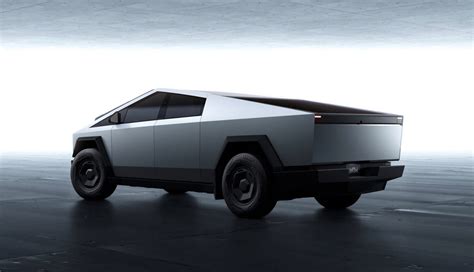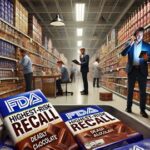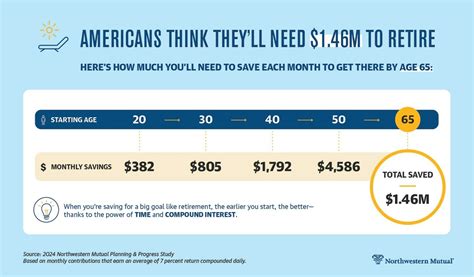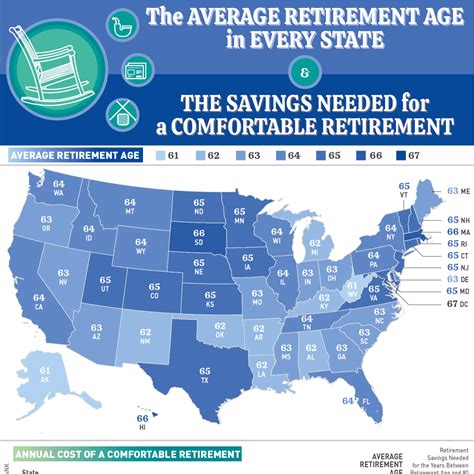
Tesla is aggressively deploying price cuts and incentives in an attempt to reverse a recent sales slowdown, signaling a potential shift in strategy after prioritizing profitability for several quarters.
Tesla, facing growing concerns over slumping sales and increasing competition, is resorting to significant price reductions and incentives to bolster demand. This move represents a potential course correction for the electric vehicle (EV) giant, which has historically focused on maintaining high profit margins, even at the expense of volume. The latest efforts, detailed on the company’s website, include discounts on existing inventory, attractive financing options, and even free Supercharger miles, indicating a more aggressive approach to moving vehicles off dealer lots and into consumers’ driveways.
Details of the Incentives
The current suite of incentives varies depending on the model and location but generally includes:
- Price Cuts on Inventory Vehicles: Tesla is offering substantial discounts on Model 3 and Model Y vehicles that are already in its inventory. These discounts can range from a few thousand dollars to over $10,000, depending on the specific configuration and location. This tactic aims to quickly reduce the backlog of existing vehicles and free up space for new production.
- Low-Interest Financing: To make its vehicles more accessible, Tesla is advertising competitive financing rates. This aims to lower the barrier to entry for potential buyers who might be hesitant to commit to a large upfront purchase.
- Free Supercharger Miles: As an added perk, Tesla is offering free Supercharger miles to new buyers. This incentive directly addresses a common concern among EV adopters: the cost and convenience of charging. By providing free miles, Tesla aims to alleviate this concern and make its vehicles more appealing to a wider audience.
- Referral Program Revival: Tesla has also brought back its referral program, incentivizing existing owners to recommend the brand to friends and family. This program offers rewards to both the referrer and the new buyer, fostering a sense of community and brand loyalty.
Rationale Behind the Shift
Several factors appear to be driving Tesla’s renewed focus on sales volume.
- Increased Competition: The EV market is becoming increasingly crowded, with established automakers and new entrants alike launching their own electric models. This increased competition puts pressure on Tesla to maintain its market share and attract new customers. “The EV market is not as Tesla-centric as it once was,” notes one industry analyst, “and consumers now have more choices than ever before.”
- Economic Headwinds: Concerns about a potential recession and rising interest rates are weighing on consumer spending, particularly for big-ticket items like cars. By offering discounts and incentives, Tesla hopes to counteract these economic headwinds and keep demand strong.
- Production Capacity: Tesla has significantly expanded its production capacity in recent years, with new factories coming online in various locations. To fully utilize this capacity, the company needs to ensure that it can sell the vehicles it produces. “Tesla has invested heavily in expanding its manufacturing footprint,” says another analyst, “and they need to fill those factories to achieve economies of scale.”
- Inventory Buildup: Reports suggest that Tesla’s inventory levels have been rising, indicating that sales are not keeping pace with production. The discounts and incentives are a direct response to this inventory buildup, aimed at clearing out existing stock and preventing further accumulation.
Impact on Profit Margins
While boosting sales volume is a priority, Tesla is likely aware that these price cuts and incentives will have a negative impact on its profit margins. The company has historically enjoyed industry-leading margins, thanks in part to its pricing power and efficient manufacturing processes. However, the current aggressive approach suggests that Tesla is willing to sacrifice some profitability in the short term to maintain its market position and drive growth.
The article from Yahoo! Finance notes that Tesla had, for a while, resisted following other automakers in offering major incentives, but “investors and analysts have been increasingly asking whether Tesla will eventually have to backtrack and start offering more incentives and discounts to keep sales humming.” It appears that moment has arrived.
Analyst Perspectives
Industry analysts have offered mixed reactions to Tesla’s latest moves. Some see it as a necessary response to changing market conditions, while others express concern about the potential impact on the company’s long-term profitability.
- Bullish View: Some analysts believe that the price cuts and incentives will be effective in boosting sales and maintaining Tesla’s market share. They argue that the company’s strong brand, technological leadership, and expanding Supercharger network give it a competitive edge. “Tesla still has a significant advantage over its competitors,” says one analyst, “and these incentives will help them capitalize on that advantage.”
- Bearish View: Other analysts are more cautious, warning that the price cuts could erode Tesla’s profit margins and damage its brand image. They argue that the company should focus on maintaining its premium positioning and differentiating itself through innovation and quality, rather than competing on price. “Tesla risks becoming just another automaker if it gets into a price war,” warns one analyst.
Potential Consequences
The shift in Tesla’s strategy could have several potential consequences:
- Increased Sales Volume: The most immediate impact is likely to be an increase in sales volume, as lower prices and attractive incentives entice more buyers. This could help Tesla maintain its market share and continue to grow its business.
- Lower Profit Margins: As mentioned earlier, the price cuts and incentives will likely squeeze Tesla’s profit margins. This could put pressure on the company to find other ways to reduce costs and improve efficiency.
- Brand Perception: The aggressive pricing strategy could alter Tesla’s brand perception, potentially diluting its premium image. The company will need to carefully manage its messaging to ensure that it continues to be seen as a leader in innovation and quality.
- Competitive Response: Tesla’s moves could trigger a response from its competitors, who may be forced to offer their own discounts and incentives to remain competitive. This could lead to a price war in the EV market, benefiting consumers but potentially hurting automakers’ profitability.
- Impact on Resale Values: The price cuts on new vehicles could negatively impact the resale values of existing Tesla models. This could frustrate current owners and make them less likely to upgrade to a new Tesla in the future.
The Long-Term Outlook
The long-term implications of Tesla’s shift in strategy remain to be seen. The company’s success will depend on its ability to balance sales volume with profitability, maintain its brand image, and continue to innovate in the face of increasing competition.
The article from Yahoo! Finance implies a sense of unease by stating that “Tesla has long resisted following other automakers in offering major incentives.” This resistance was likely rooted in a desire to maintain the aura of exclusivity and high demand that has characterized the brand. The decision to now embrace discounts and incentives suggests that the competitive landscape has shifted, and Tesla recognizes the need to adapt.
Tesla’s Q1 2024 Results: A Sign of Things to Come?
Tesla’s Q1 2024 results offered a glimpse into the challenges the company is facing. While revenue grew year-over-year, it fell short of analysts’ expectations. Profit margins also declined, reflecting the impact of price cuts and increased competition. During the earnings call, CEO Elon Musk acknowledged the challenges but reiterated his commitment to long-term growth. He emphasized the importance of investing in new products and technologies, such as the Cybertruck and full self-driving software.
The Global EV Market: A Broader Perspective
Tesla’s situation is not unique. The global EV market is undergoing a period of rapid change, with increasing competition, evolving consumer preferences, and fluctuating government policies. Automakers around the world are investing heavily in electric vehicles, and the range of available models is expanding rapidly. This increased competition is putting pressure on all players in the market, including Tesla.
China, in particular, is emerging as a major force in the EV market. Chinese automakers are producing high-quality electric vehicles at competitive prices, and they are rapidly gaining market share both domestically and internationally. Tesla faces a significant challenge from these Chinese competitors, particularly in the mass-market segment.
Consumer Sentiment and EV Adoption
Consumer sentiment towards electric vehicles is also evolving. While awareness and interest in EVs are growing, adoption rates remain relatively low in many markets. Concerns about range anxiety, charging infrastructure, and upfront costs continue to be barriers for some consumers.
To accelerate EV adoption, automakers need to address these concerns and make electric vehicles more accessible and appealing to a wider audience. This includes investing in charging infrastructure, developing longer-range batteries, and offering more affordable models. Government policies, such as tax incentives and subsidies, can also play a significant role in driving EV adoption.
The Impact of Battery Technology
Battery technology is a key factor in the evolution of the EV market. Improvements in battery energy density, charging speed, and cost are critical for making electric vehicles more competitive with gasoline-powered cars. Tesla has been a leader in battery technology, but other automakers are also making significant progress.
The development of solid-state batteries is seen as a potential game-changer for the EV market. Solid-state batteries offer higher energy density, faster charging times, and improved safety compared to traditional lithium-ion batteries. Several companies, including Tesla, are investing heavily in solid-state battery technology.
The Future of Tesla
Tesla’s future will depend on its ability to navigate the challenges and opportunities of the evolving EV market. The company has a strong brand, a loyal customer base, and a track record of innovation. However, it faces increasing competition, evolving consumer preferences, and the need to maintain profitability while investing in future growth.
Tesla’s success will also depend on its ability to execute its ambitious product roadmap. The Cybertruck, the next-generation Roadster, and other upcoming models have the potential to drive significant growth, but they also carry execution risks.
Conclusion
Tesla’s decision to offer discounts and incentives marks a significant shift in strategy. While the move is likely to boost sales volume in the short term, it also raises questions about the company’s long-term profitability and brand image. The evolving EV market is becoming increasingly competitive, and Tesla will need to adapt and innovate to maintain its leadership position. The effectiveness of this new strategy will be closely watched by investors, analysts, and consumers alike. The coming quarters will reveal whether this is a temporary adjustment or a fundamental change in Tesla’s approach to the market.
The pressure on Tesla is mounting, as the company confronts a confluence of factors—increased competition, macroeconomic uncertainty, and evolving consumer preferences—that are collectively reshaping the electric vehicle landscape. Whether this adjustment is a temporary blip or a sign of a deeper shift in Tesla’s strategy remains to be seen, but one thing is clear: the electric vehicle revolution is accelerating, and Tesla must adapt to thrive in this dynamic environment.
Frequently Asked Questions (FAQ)
-
Why is Tesla offering discounts and incentives now?
Tesla is offering discounts and incentives due to a combination of factors, including increased competition in the EV market, concerns about economic headwinds affecting consumer spending, growing production capacity that needs to be utilized, and a buildup of inventory. As the article notes, “investors and analysts have been increasingly asking whether Tesla will eventually have to backtrack and start offering more incentives and discounts to keep sales humming,” and that moment has arrived. This signifies a shift from prioritizing high profit margins to focusing on maintaining market share and boosting sales volume.
-
What kind of discounts and incentives is Tesla offering?
Tesla is offering several types of incentives, including:
- Significant price cuts on existing inventory vehicles of Model 3 and Model Y, potentially ranging from a few thousand dollars to over $10,000.
- Low-interest financing options to make vehicles more accessible to buyers.
- Free Supercharger miles to alleviate concerns about charging costs and convenience.
- The revival of its referral program, offering rewards to both existing owners who refer new buyers and to the new buyers themselves.
-
How will these discounts affect Tesla’s profit margins?
The discounts and incentives are expected to negatively impact Tesla’s profit margins. Historically, Tesla has enjoyed industry-leading margins. The aggressive pricing strategy suggests a willingness to sacrifice some short-term profitability to maintain market position and drive sales growth. Analysts have expressed concern that the price cuts could erode margins and potentially damage the brand’s premium image.
-
What does this mean for the future of Tesla’s brand perception?
The aggressive pricing strategy could alter Tesla’s brand perception. There is a risk of diluting its premium image if the company becomes too focused on competing on price. Tesla will need to carefully manage its messaging to continue being viewed as a leader in innovation and quality, not just as a provider of affordable electric vehicles.
-
How does this affect the resale value of existing Tesla vehicles?
The price cuts on new vehicles could negatively impact the resale values of existing Tesla models. Current owners may be frustrated by the decreased value of their vehicles, and this could potentially make them less likely to upgrade to a new Tesla in the future. This is a common issue when automakers offer significant discounts on new models.
-
What impact will this have on Tesla’s competitors?
Tesla’s moves could trigger a response from its competitors, who may be forced to offer their own discounts and incentives to remain competitive. This could lead to a price war in the EV market, benefiting consumers but potentially hurting automakers’ profitability across the board.
-
What is Tesla’s overall strategy with these new incentives?
Tesla’s overall strategy appears to be shifting from a focus on maximizing profit margins to prioritizing sales volume and market share in a more competitive landscape. This may be a necessary adjustment to counteract increased competition, economic headwinds, and growing inventory levels. The company is aiming to attract a broader range of customers by making its vehicles more affordable and accessible.
-
How is the broader EV market influencing Tesla’s decisions?
The broader EV market is becoming increasingly crowded, with established automakers and new entrants launching their own electric models. This increased competition puts pressure on Tesla to maintain its market share and attract new customers. The rise of Chinese EV manufacturers, in particular, is creating a significant challenge for Tesla in both domestic and international markets.
-
What is Tesla doing to address concerns about range anxiety and charging infrastructure?
Tesla is addressing concerns about range anxiety and charging infrastructure by offering free Supercharger miles as an incentive, continuing to expand its Supercharger network, and developing longer-range batteries. The company is also investing in battery technology to improve charging speed and energy density.
-
What role does battery technology play in Tesla’s future?
Battery technology is crucial to Tesla’s future. Improvements in battery energy density, charging speed, and cost are critical for making electric vehicles more competitive with gasoline-powered cars. Tesla has been a leader in battery technology, and the development of solid-state batteries is seen as a potential game-changer.
-
How are economic conditions impacting Tesla’s sales?
Concerns about a potential recession and rising interest rates are weighing on consumer spending, particularly for big-ticket items like cars. By offering discounts and incentives, Tesla hopes to counteract these economic headwinds and keep demand strong.
-
What are analysts’ views on Tesla’s current situation?
Analysts have mixed reactions. Some believe the incentives will boost sales and maintain market share, citing Tesla’s brand, technology, and Supercharger network. Others are cautious, warning about eroded profit margins and brand image damage, suggesting a focus on premium positioning and innovation rather than price competition.
-
How will Tesla balance sales volume and profitability going forward?
Balancing sales volume and profitability will be a key challenge for Tesla. The company will need to find ways to reduce costs, improve efficiency, and maintain its brand image while continuing to offer competitive pricing. This may involve investing in new technologies, streamlining manufacturing processes, and carefully managing its marketing and branding efforts.
-
What new products and technologies is Tesla focusing on?
Tesla is focusing on new products and technologies such as the Cybertruck, the next-generation Roadster, and full self-driving software. These innovations have the potential to drive significant growth, but they also carry execution risks.
-
How is Tesla competing with Chinese EV manufacturers?
Tesla faces a significant challenge from Chinese competitors, particularly in the mass-market segment. Chinese automakers are producing high-quality electric vehicles at competitive prices and are rapidly gaining market share. Tesla is competing by offering competitive pricing, improving battery technology, and expanding its production capacity in China.
-
What are the potential long-term consequences of this strategy shift?
The long-term implications are uncertain. Increased sales are likely, but lower profit margins, altered brand perception, and competitive responses are possible. Tesla must balance sales with profitability, maintain its brand, and innovate amid competition.
-
What does Tesla’s Q1 2024 performance indicate?
Tesla’s Q1 2024 results showed revenue growth but fell short of expectations, with declining profit margins due to price cuts and competition. CEO Elon Musk reaffirmed a commitment to long-term growth and investment in new products like the Cybertruck and self-driving software.
-
How is consumer sentiment affecting EV adoption rates?
Consumer sentiment towards EVs is evolving. Awareness and interest are growing, but adoption rates remain relatively low in many markets due to concerns about range anxiety, charging infrastructure, and upfront costs. Automakers need to address these concerns to boost adoption.
-
What role do government policies play in EV adoption?
Government policies, such as tax incentives and subsidies, can play a significant role in driving EV adoption. These policies can help to reduce the upfront cost of electric vehicles and make them more competitive with gasoline-powered cars.
-
Is this a temporary strategy change or a long-term shift for Tesla?
The coming quarters will reveal whether this is a temporary adjustment or a fundamental change in Tesla’s approach to the market. The evolving EV landscape requires adaptation, and Tesla’s response will be closely watched.









